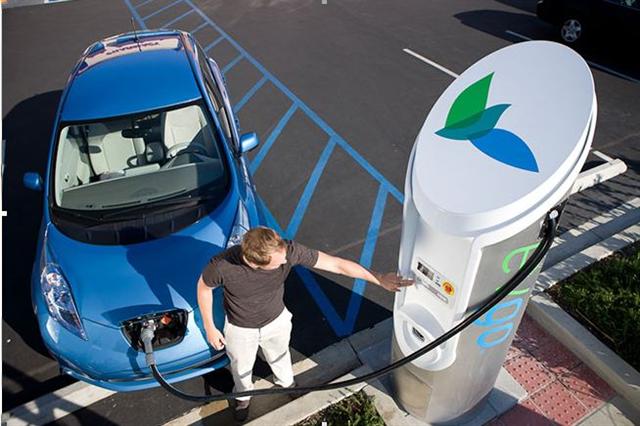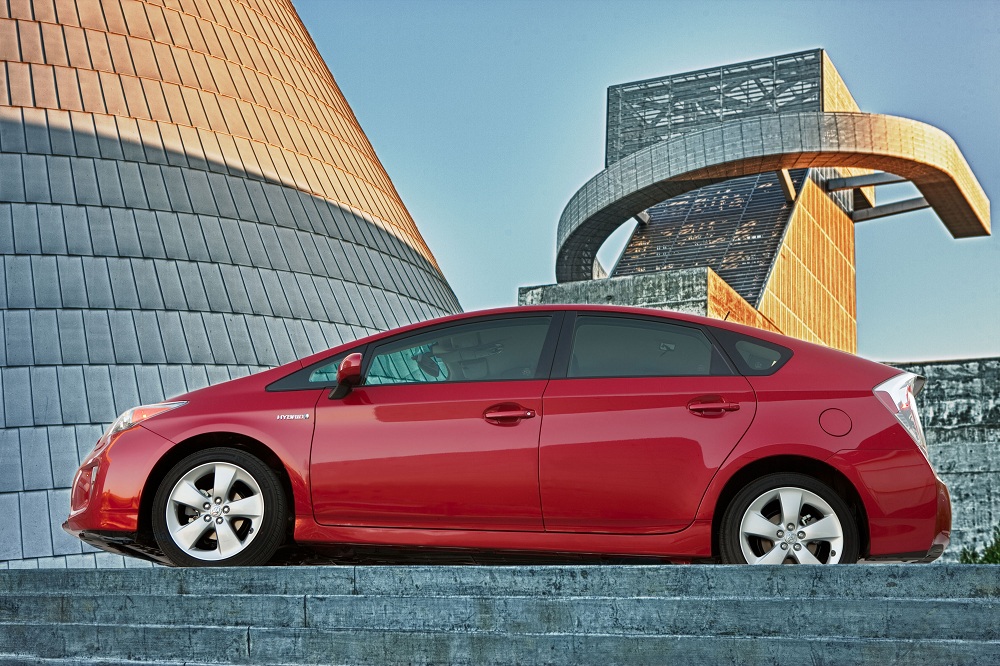For some companies in the auto industry, building cars to hit a target of 54.5 mpg by 2025 may seem like a near-impossible task.
But to others, the EPA's Corporate Average Fuel Economy targets agreed in 2011 aren't simply achievable by that date, but could be reached today--and with today's technology.
Start-stop, turbos, direct injection
Speaking to Automotive News, Johnson Controls chief executive Brian Kesseler says existing technologies, such as stop-start systems, turbochargers, and direct injection, can deliver an internal combustion engine capable of matching those lofty 2025 figures.

2011 Nissan Leaf plugged into an EVgo quick-charging station, Texas
"Automakers don't necessarily need hybrids, [electric cars], or plug-ins," he said in an interview.
Several automakers are already using those technologies to boost the gas mileage of their vehicles, with manufacturers such as Ford introducing EcoBoost direct-injected, turbocharged engines in several models across its lineup.
Ford isn't the only one, either--virtually every car company currently has one or more downsized, direct-injected and turbocharged engines in its lineup to minimize fuel consumption.
Stop-start systems are also starting to make an appearance, with some manufacturers confident that real-world gas-mileage benefits for consumers will compensate for the fact that the effects stop-start systems are minimal in EPA test cycles.
The old-fashioned way
Other automakers, such as Mazda with its SkyActiv engine range, are considering even simpler efficiency gains--eschewing turbocharging in favor of wringing out every last efficiency gain from regular engines.
2012 Mazda3 SkyActiv 2.0
Those efforts will be followed by high-compression and homogeneous charge compression ignition engines. The latter technology involves igniting gasoline fuel without a spark, like a diesel engine.
In Mazda's case, gains of 30 percent are targeted, largely to meet Europe's even stricter economy standards--requiring gasoline cars to reach as high as 83 mpg in European testing by 2025.
Real-world figures in the U.S. will be much lower, and in reality the CAFE 54.5 mpg target works out around 42 mpg on an EPA window sticker.
But with large pickup trucks and other relatively inefficient vehicles selling in great numbers, many see it as a tough target to meet--and one that could raise the cost of vehicles significantly.
Hybrids: already there
Electric vehicles and hybrids are already well within reach of the target, though.
2012, 2013, and 2014 Toyota Prius
Several current models--even the Toyota Prius, which has an all-new model coming in the next year or two--already beat the 42-mpg window sticker figure.
That's led many to believe that hybrids and plug-in vehicles will be the only way to hit such economy targets. But Kesseler's comments suggest they may not be.
He says manufacturers must work closely with suppliers of the touted technologies, to keep up development momentum. If they do so, he says, judicious application of these technologies could bring regular vehicles well within reach of 2025's targets.
The challenge for automakers will be to ensure these new, high-tech engines deliver acceptable real-world mileage, rather than testing-optimized figures.
There's already a concern that the latest turbocharged units can miss out on EPA numbers if not driven very gently indeed.
Consumers will have little to gain if future vehicles are designed only to ace testing cycles, rather than deliver actual gas savings on your daily commute.
______________________________________________













